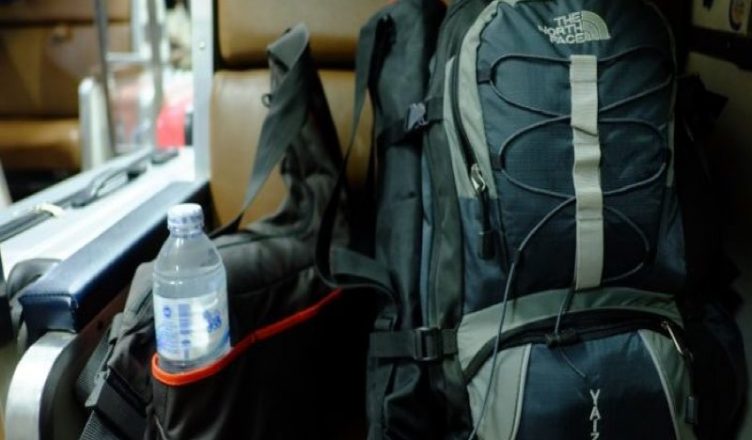Some situations in life do not give you time to think a lot. Sometimes you just must act in the interests of protecting your family. If you are ever faced with having to evacuate your home quickly, a packed go bag is your best bet of getting out of the house fast with the supplies you need to survive, potentially without anything else.
There are few things that provide preppers with a sense of security like a well-thought-out go-bag. Go bags are the same thing as a Bug Out Bag. It is a bag personalized to you and your situation expressly designed to grab on your way out the door. Your go bag should be packed and ready to go when you need it.

Today, we are going to break down what is needed for a go bag list and give you the information you need to set your own go bag up. Hopefully, you will never need a go-bag, but if you do let’s make sure you know the important items to consider when you build your go-bag.
What is the purpose of a go bag?
A go bag contains the essentials you need to live if you are forced to leave your location. This bag will have everything you need plus some additional supplies, but careful thought and consideration should be given to what you are putting in this bag. Why? Because you will have to carry all this stuff and the more you add, the heavier it gets.
I wrote a post a while back about weight considerations called “Is Your Bug Out Bag Going to Get you Killed?” and if you need more convincing about weight, maybe you should read that article first. For the rest of you, I will assume that you want to carefully consider the supplies you need in this situation.
For people like you, I have created this companion list of Bug Out bag contents. It is a free, downloadable PDF and a little explanation for each item. All the items on the bug out bag checklist apply to the Go bag list too.
Read More – How to pack a bug out bag
The properly loaded Go Bag should give you everything you need to live for 3 days at a minimum so that is the framework of this list. This is not something you will be able to pack everything in, more like the essentials you need to survive in the wild. You will not be packing two weeks’ worth of food and water in here and most of this list might be considered the bare necessities by some.
What should you pack in a go bag?
Water
Water is essential to anyone’s survival so you must have a plan for carrying it with you. However, you will not carry all the water you need because it is heavy and takes up too much space. Your goal should be obtaining additional water along the way and treating it so that you can drink it without catching a disease that will knock you on your butt at the worst possible time.
Water filtration is one of the most important preps in your go-bag. Even “clean” natural sources of water have organisms that do not agree with you. You do not know what happened upstream. There could be a dead body in the bottom of that pond. It is always necessary to filter or disinfect your wild water before you drink it. If you do not believe me, just think about the last time you were away from home and you got sick.
Water Bottle or container
I like plastic Nalgene bottles because they give you a very lightweight way to carry water. When empty, they barely weigh anything but still take up space. You can’t boil water in a Nalgene Bottle though, so you need water filtration options. If you do not want to carry a water filter and plan to boil all your water, you need something stainless steel and single-walled. Do not try to boil water in an insulated stainless steel water bottle.
Water Filter
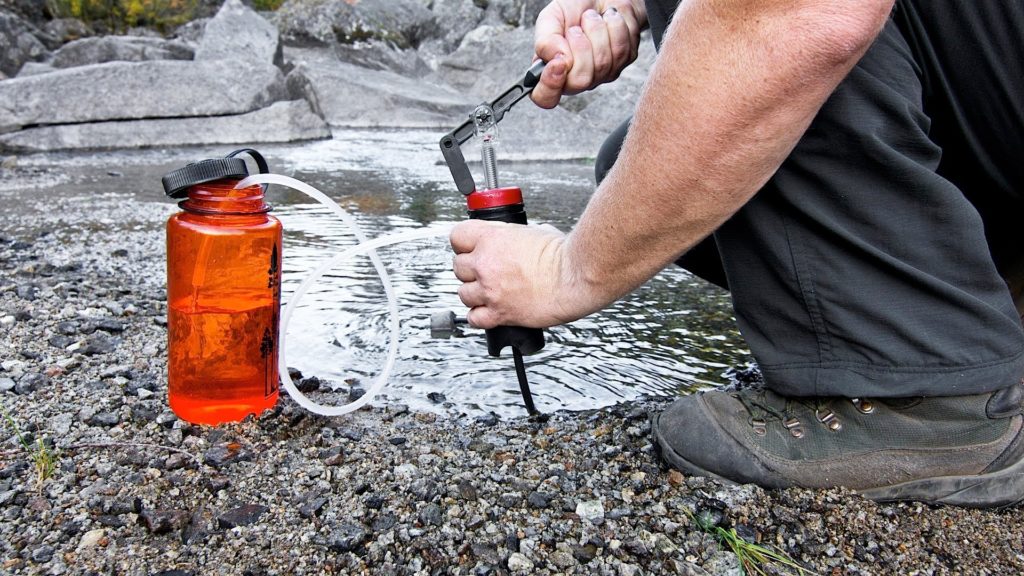
There are two that I like and both are gravity-fed water filtration options for my go bag. My hands-down favorite water filter is the Platypus GravityWorks Water Filter. It is simple, no moving parts, and filters a lot of water quickly. The second filter that is great for your go bag is the Sawyer Products Mini Water Filtration System. Both will do an excellent job of converting water that you collect into drinkable water.
Read More – Bug Out Bag Water Filtration Options
What about Ultra Violet pens or Water treatment tablets or chlorine? I do not like the taste that treatment tablets or chlorine add to water and I don’t want to depend on anything that needs batteries for my drinking water. Do you run the same risks with mechanical filter systems? Sure, and that is why I stopped using the MSR Miniworks Microfilter (which appears to have been replaced by the MSR Guardian). It has a pump action that worked great many times, but stopped on a backpacking trip we were on. Fortunately, I had another filter or we would have been in trouble.
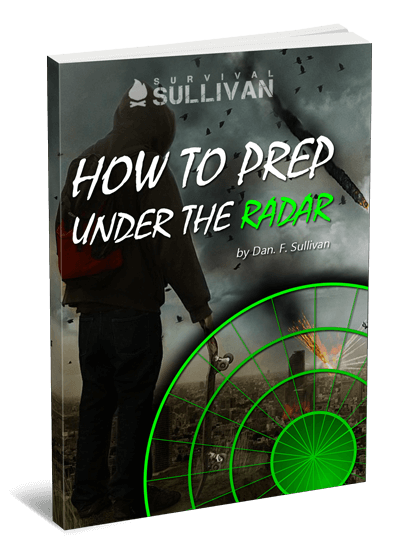
Extra Water Storage Capacity
I like the regular Nalgene bottles, but to save trips to the creek, I also pack a backup water container in the Nalgene Wide Mouth Cantene (32-ounce). This allows me to fill up two bottles for my go bag and that normally lasts me all day unless I am in extreme heat environments. This Nalgene canteen collapses down to virtually nothing so space or weight when it is empty isn’t an issue.
Optionally, the Gravityworks can be used in the same way, just fill your dirty water bag up with water and put that in your pack. It will drain into your clean bag as you empty that so it’s an additional reservoir. It’s also a good idea to carry extra water when you come across it so that you have more time to find another water source.
If you run out of water and can’t find another source of water, that backup supply will be important. Yes, it adds more weight to your go bag, but it is weight you will gradually consume.
Food
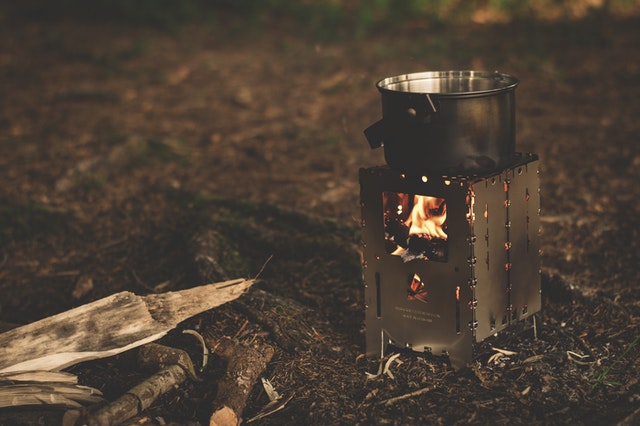
OK, water is covered, for the most part, now we move to the next most important survival item in your go bag and that is food. This topic is simple, but everyone has their own idea of what surviving is. I have seen some people recommend cans of tuna, pop tarts, and ramen noodles in your go bag. This will certainly work but you need to consider size and weight.
Canned food is heavy and potentially noisy. You can also add dehydrated meals designed for camping too. I am focusing on two things when it comes to food in your go bag. The first is how long you can store it and the second is how simple is it to prepare/vs. nutritional value.
Tuna fish and Pop-Tarts are simple and do not require any heating, so they are a plus, but I don’t want tuna in a hot car all summer if that is where I am storing my go bag. I also do not want to have to worry if they have gone bad, but I think the biggest thing is that if you are running for your life with everything you need to survive strapped to your back you are going to need some serious calories. For my go bag, I like two options depending on where I have my bag stored.

For warmer conditions like in the trunk of my car, I like Mainstay Emergency Food Rations. These really are emergency food bars and withstands Temperatures of -40° F to 300°F (-40°C to 149°C). Think of these as survival rations you would find stored in a lifeboat. It is not gourmet dining and tastes a little like you are eating densely packed coconut flavored bread.
The advantage of these survival rations are that they will take the extremes of summer (unless you live on Mars) and give you a ton of calories in a small footprint. You do not need to add water or anything, just break off a chunk and eat it. The second (and preferred) option if I have my choice would be Mountain House Freeze Dried meals designed for camping. I get the pouches that feed two just in case and grab the highest calorie packs you can get.
The Breakfast Skillet is excellent and at 680 calories will fill you up and give you much-needed energy for hiking with that go bag. I think the Chili Mac is even higher in calories and tastes great in my opinion. You do not need anything for these but a spoon and hot water. Just fill the bag up with the recommended amount of hot water, stir, let it sit for a few minutes, and dig in. You can pack 9 of these in your pack or 6 and those pop tarts. They do take up space, but they are lightweight.
Spare Clothing
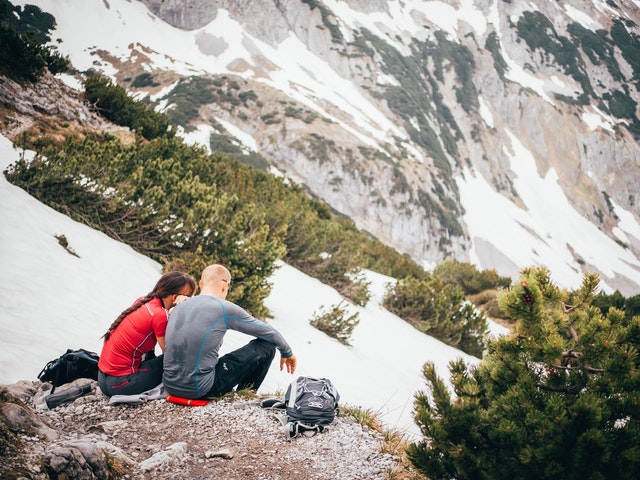
Food and water, check. OK, the last leg of the survival pyramid is shelter and in this, we will count clothing as well as something to keep the elements off you. A change of clothes This is simple, or it should be. You want a good pair of long pants, long sleeve shirt, a change of underwear, and a spare pair of socks. What if it is hot? Shorts are nice, but not necessary because you are already living without the convenience of air conditioning most likely so you will already be sweating.
Why long pants? Because they will provide more protection for your legs. Same with the shirt and in the warm weather, you do not need to get a sunburn. I recommend clothing designed for hiking and that means non-cotton clothing. It is lighter, will dry out faster when wet, and packs down much smaller. What if it is cold? You will be wearing warmer clothes anyway so this should already be on your person and not in a pack. Layers are the best way to go about clothing but remember, this is just to save your life.
You do not need to be pretty and you won’t die if you have to wear the same pants for two days in a row. It is the same with underwear. I would also add some rain protection in either a raincoat or poncho. I would not leave the house without sturdy shoes I can walk for a long time in and you should pack appropriate headgear for the season too.
In the winter I like a beanie to keep my head warm, but again I will most likely be wearing this and will not have it in the pack. Gloves are also a nice addition and I have something that will keep my hands warm in the winter, but something designed for work regardless. A good pair of leather gloves should be added as well to protect your hands.
Shelter
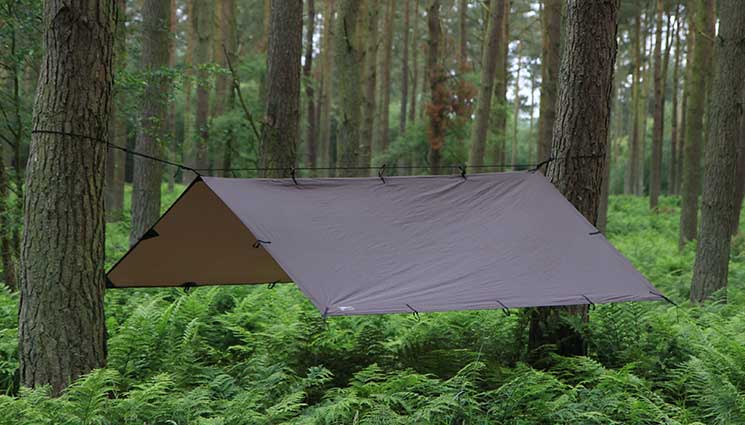
Tarps or rain fly’s are lighter options than a tent and take up less space.
This is just to keep the elements off you and will not replace a warm and toasty house. The shelter can go from the extremes of a tent to the simple tarp. Not that a tent is extreme, but tents add a good bit of weight, take time to set up and tear down, and are noticeable from a distance normally.
For camping, I take a tent, but for Bugging out I would consider a tarp-like the ENO Pro Fly Rain Tarp instead of a full tent. Tarps are much lighter and give you protection from the elements much like a tent. You won’t be able to keep out bugs though – again, this is about life-saving, not the ultimate in comfort.
Sleeping bags are another weight consideration that takes up a good bit of space. My tent and sleeping bag are easily the heaviest and largest items in my regular backpack for camping. You can buy very lightweight and compact sleeping bags but expect to pay at least $400 to save the weight and room in your pack for all the other goodies you need.
In the theme of survival again, I would recommend an Adventure Medical Kits SOL Emergency Bivvy instead of a sleeping bag. These are cheaper than a regular bag at around $15, fit in the palm of your hand, and only weigh 4 ounces. This will save a lot of weight and room in your pack.
Light and Fire
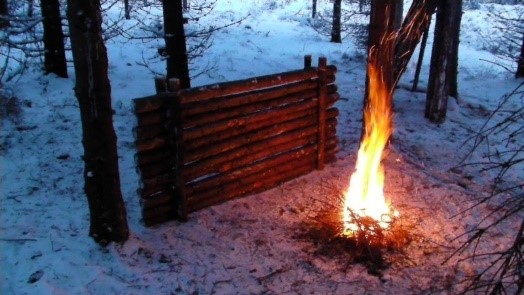
For fire, you can get tricky or keep it safe. For me, I recommend several good Bic disposable lighters stored in a waterproof bag. Easy and virtually foolproof. Additionally, I carry a Swedish Firesteel as a backup. You can also pack all sorts of other implements, but chances are that if you cannot start a fire with a lighter or a fire steel, you will not be able to start a fire anyway.
For lighting, I recommend LED headlamps for everyone. This is a perfect hands-free option to light your way that is great even for kids. Each person has their own LED headlamp. I prefer these to flashlights since they are hands-free and always point where your head is looking. Plus, they take regular AAA batteries and not some weird off nomenclature or rechargeable batteries that some of the higher-end headlamps do.
I do not recommend rechargeable flashlights or headlamps for a couple of reasons. First, you have to carry and keep up with a spare cord. Secondly, you may not be in an environment where electricity is even available. Yes, you could pack a small solar panel and charge them that way, but the way I see it is that there are a lot of batteries out there and packing another half dozen will keep me in light for a very long time and do not add much weight.
Self Defense
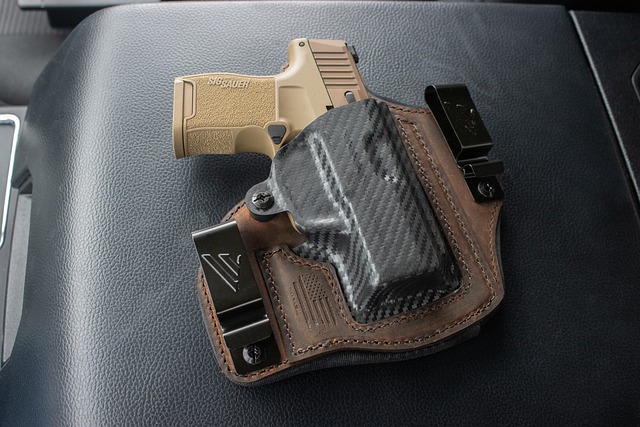
The items above should be able to keep you alive if you are out in the elements by yourself. If you are out in the elements with other people, you should consider something for self-defense. The choice of implements for protection vary by the situation you are in and what you could be faced with. I have guns so that is my go-to option for self-defense.
If the reason I was bugging out was total bedlam, anarchy I would take a rifle and a pistol. If this was a temporary bug out due to a weather event or something that I thought was temporary I might only take a concealed pistol. Regardless of what the situation is, you will need something for your self-defense. I will leave the choice up to you.
Regardless of your stance on guns or your ability to carry them, I would seriously consider having something that you can use to defend yourself.
Personal Handgun with 3 Magazines – Individual firearms should be your next to the last line of defense assuming you have a full complement of firearms procured already. They are a good first option though if you are looking for something for home defense. You can read more about our recommendations here… but ensure you have at least 3 magazines for your weapon and get training. Pistol magazines are frequently on sale at Gun Mag Warehouse.
Personal Rifle with 6 Magazines – A better option for security is a semi-automatic rifle. The AR-15 and Ak-47 are the defacto standards for most preppers out there and we debate the merits of each in this article but either will do a good job at defending your family. Again, training is non-negotiable, and you want to be very proficient in your main battle rifle. Rifle magazines are cheaper than most pistol magazines for some reason and Gun Mag Warehouse has a good selection of those also.
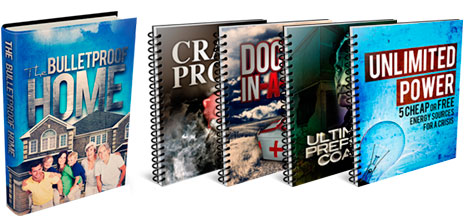
Holster for pistol or battle belt – Yes, you can tuck your pistol into the back of your pants as they do in the movies, but this is just asking for trouble. More so if you are one of the people who like to wear baggy pants…
You can go with something like a Battle belt that allows you to configure additional pouches on your belt that are fastened and ready to go at a moment’s notice. I have a Safariland 6005 SLS Tactical Holster that I converted to fit my belt. Now, I just grab the belt, insert my pistol into the holster, clip it on and go. It is preconfigured with 2 pistol magazines, 2 rifle magazines, IFAK, and a drop pouch.
You can go with something like a Battle belt that allows you to configure additional pouches on your belt that are fastened and ready to go at a moment’s notice. I have a Safariland 6005 SLS Tactical Holster that I converted to fit my belt. Now, I just grab the belt, insert my pistol into the holster, clip it on and go. It is preconfigured with 2 pistol magazines, 2 rifle magazines, IFAK, and a drop pouch.
You can go with something like a Battle belt that allows you to configure additional pouches on your belt that are fastened and ready to go at a moment’s notice. I have a Safariland 6005 SLS Tactical Holster that I converted to fit my belt. Now, I just grab the belt, insert my pistol into the holster, clip it on and go. It is preconfigured with 2 pistol magazines, 2 rifle magazines, IFAK, and a drop pouch.
Or you can just use a good Kydex type of holster and along with a sturdy belt, just clip this into your pants and you still have a better method of carrying your firearm than in the back of your pants.
Ammo for each firearm – Firearms without ammo are just expensive paperweights. You do not need to drop thousands of dollars for ammo, but the more you have the better. For guidelines on recommended ammo amounts, you can check and download our free ammo inventory spreadsheet. Start small but start.
Cleaning kits – Shooting a firearm introduces a lot of powder gunk and chemicals not to mention the dirt or mud that just carrying one all the time can bring. Make sure your weapon is in prime order and ready to fire by ensuring it is clean and well lubricated. A good weapon cleaning kit is not expensive but a weapon malfunction because you didn’t clean it could cost you your life.
Weapon Light – A weapon light is not necessary, but they are incredibly useful. I have a Streamlight TLR-7 500 Lumen on my nightstand gun and a Streamlight TLR-9 1,000 Lumen on my rifle. Yes, you could hold a flashlight in one hand and with training be effective, but what if your flashlight isn’t with your gun?
If you are getting a weapon light for your pistol, make sure you do this before purchasing your holster.
Communications
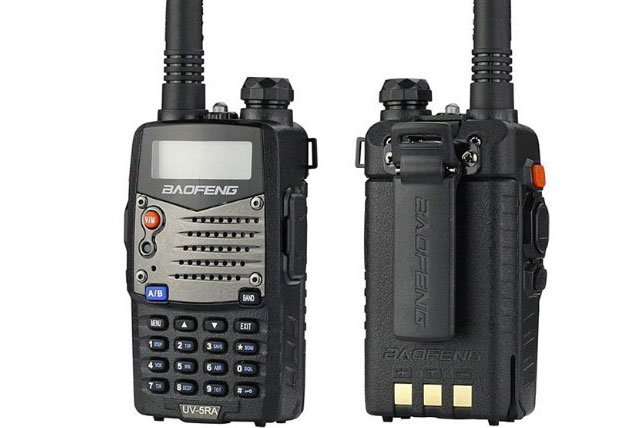
Baofeng UV-5RA Ham Two Way Radio
The communications options are limited to the scenario you are in. If we have a minor event where you can reasonably expect life to return to normal sometime, a spare cell phone battery might be all you need or a backup power charger to charge the phone you have. If cell service is down your only real option would be walkie-talkies which have a very limited range or HAM radios.
I recommend carrying a hand-held HAM radio capable of broadcasting and receiving on UHF and VHF and a dual-band antenna that can give you more range.
For the radio, I recommend the Baofeng because they are solidly built, offer any feature you can reasonably need for grid down communications and only cost around $35. You just can’t beat that! Pair this radio up with a Slim Jim antenna and 50 feet of coax cable and lastly an adapter connector and you can easily talk or listen to anyone broadcasting 30 to 50 miles depending on where you are.
Just loop some paracord around the antenna, throw that up into a tree and you are all set. You have to learn how to use this equipment, but it is in my opinion the single best go Bag option for communicating if the grid goes down. Now, this assumes that you know how to use a ham radio.
There is a decent-sized learning curve for this technology. Any real distance with small handheld units like this requires you are able to hit a repeater. The Baofeng above has a much greater distance than something like an FMRS radio you see everywhere, but they are still limited by the transmit power they have.
Lastly, you are only going to hear or be heard on a frequency someone is monitoring. If you are looking for just general news, something like a shortwave radio may be the better option. Ham radios make perfect sense if you have someone to communicate with, but if you just want to find out what’s going on, there may be simpler options.
Tools
The tools I consider bringing taking into account weight is a multi-tool like a Leatherman, a good pocket knife like a Tenacious G10 from Spyderco, and a larger multi-purpose knife like a Gerber LMF II. What about bolt cutters, pry bars, and chain saws? I do not think those are good for a go bag. Small bolt cutters are only going to be useful on smaller/cheaper locks anyway. Should you have them at home? Sure, but the chances you will need something like that are slim.
What if the SHTF you ask, and I must break into a warehouse for shelter? I hear you, but I simply do not think it is worth the weight. Additionally, having a big pair of bolt cutters sticking out of your go bag could mark you as trouble and invite unwanted attention from people who see you.
If it does get that bad, you can probably easily find one anyway.
The Multi-tool will meet most of your needs for fine tools with pliers, a small saw, and a wrench. If you plan on rebuilding an engine with it though it won’t be enough. Other tools are something to cook/boil water with a good first aid kit and some paracord.
For boiling water and cooking, I recommend something like a JetBoil Flash. The whole kit and fuel fit nicely in one small, relatively lightweight container. With this, you can boil water for your freeze-dried food or disinfect it. It’s also really good for coffee too. Optionally, you can go more minimalistic which is what I have started to do, and use a Jetboil MightyMo Ultralight. It’s about half as much and you will need to get your pot to boil things in.
Adventure Medical Kits make a decent ultralight first aid kit. This will not allow you to perform surgery in the woods or remove a bullet but cover most of the bases. I would augment one of these per bags with a bag of Quick Clot and some larger pressure dressing bandages. Tampons and Maxi pads are also great blood stoppers… obviously.
Hygiene
I know some people throw the entire medicine cabinet in their bug-out bags, but again I am only thinking about survival not going to the prom – so the basics
- Toilet Paper
- Hand Sanitizer
- Soap
- Toothbrush/toothpaste
- Lib balm
- Sunglasses
- Towel
- Poop Shovel
- Bug spray
What about women? I have added a couple of extra niceties to my wife’s go bag only because I know that will improve her outlook should we be forced to bug out. Your mileage may vary.

Miscellaneous Gear
For miscellaneous, I would add some duct tape which you can wrap around your water bottles, lighters, or just about anything else, bandannas that have a thousand uses, and spare batteries for any gear that requires them. What about important documents? I am still on the fence about that, but I plan on writing about that later.
I just do not see an Ellis Island type of situation happening where you need to show your birth certificate, but anything is possible. With COVID we may soon be required to show a vaccine passport. I can see having an ID with your current address to prove where you live.
Conclusion
The items above in the go bag checklist will get you started on your way to being much more prepared to deal with a fast-moving disaster. What other items do you put in your go bag?
source : Pat Henry

